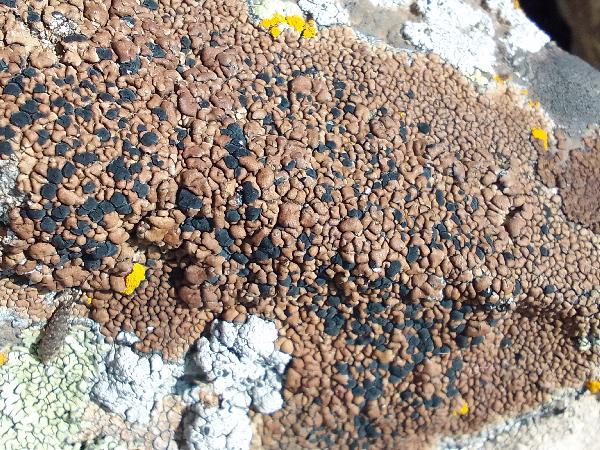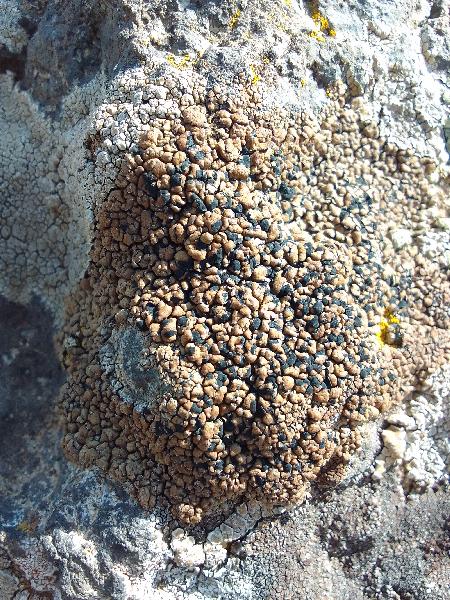Lecidea atrobrunnea (DC.) Schaer. subsp. atrobrunnea
Lich. Helv. Spicil., sect. 3: 134, 1828. Basionym: Rhizocarpon atrobrunneum DC. in Lamarck & de Candolle - Fl. Franç., éd. 3, 2: 367, 1805.
Synonyms: Lecidea funckii Flot.; Lecidea protecta H. Magn.; Lecidea pseudassimilis Hertel; Lecidella atrobrunnea (DC.) Körb.; Psora atrobrunnea (DC.) A. Massal.; Sporastatia funckii (Flot.) Dalla Torre & Sarnth.
Distribution: N - Ven (TSB 11714), TAA (Hertel & Leuckert 2008, Nascimbene & al. 2022), Lomb (Hertel & Leuckert 2008, Hertel & Schuhwerk 2010), Piem (Isocrono & al. 2003, 2004, Morisi 2005, Isocrono & Piervittori 2008, Hertel & Leuckert 2008, Hertel & Schuhwerk 2010, Favero-Longo & al. 2013, Watson 2014), VA (Piervittori & al. 1998, 2004, Piervittori & Isocrono 1999, Piervittori & al. 2001, Favero-Longo & al. 2005b, Isocrono & al. 2008, Favero-Longo & Piervittori 2009, Matteucci & al. 2013b, 2015c), Lig (TSB 33431). C - Sar (Rizzi & al. 2011). S - Bas (Hertel & Leuckert 2008).
Description: Thallus crustose, episubstratic, 0.5-2.5 mm thick, areolate to almost squamulose, of flat to strongly convex, up to 3 mm wide, yellow-brown, copper-brown or dark reddish brown, often shiny areoles with or without a thin, whitish to blackish edge; prothallus absent to usually conspicuous, dark. Cortex brown in upper part, colourless in lower part, with a translucent epinecral layer; medulla white, I+ intensely blue-violet, Apothecia lecideine, black, 0.5-1.5(-2.5) mm across, often clustered, slightly constricted base, with a flat to convex, rarely bluish-pruinose disc, and a persistent, raised, often slightly wavy proper margin. Proper exciple of parallel-radiating, 3-7 µm thick hyphae, blue- to green-black in outer part, colourless or very pale brown within, 25-150 µm wide laterally; epithecium bright green, bluish-green or olive-green, 8-15 µm high; hymenium colourless to very pale green in upper part, 34-62(-65) µm high, I+ blue; paraphyses coherent, usually simple or shortly branched in upper part, rarely anastomosing, 1.5-2.5 µm thick at mid-level, the apical cells clavate, 3-5 µm wide; hypothecium colourless to pale brown, I+ blue. Asci 8-spored, narrowly clavate, thick-walled, with a K/I+ pale blue tholus and a strongly amyloid, thin apical cushion, surrounded by a I+ blue outer layer, Lecidea-type. Ascospores 1-celled, hyaline, ellipsoid-oblong, with rounded ends, (5-)7-11(-13) x 3-7 µm. Pycnidia immersed with a usually irregular to graphidioid ostiolar region. Conidia bacilliform, (5.5-)7.2-11(-21) x 0.8-1.4 µm. Photobiont chlorococcoid. Spot tests: cortex and medulla K-, C-, KC-, P-; medulla K/UV+ mauve. Chemistry: confluentic acid and sometimes 2'-O-methylperlatolic acid.Note: a bipolar, arctic-alpine to boreal-montane species of acid siliceous rocks in exposed situations, with optimum near and above treeline; common only in the Alps. The species is chemically variable, and several chemotypes were distinguished. For further details see Hertel & Leuckert (2008).
Growth form: Crustose
Substrata: rocks
Photobiont: green algae other than Trentepohlia
Reproductive strategy: mainly sexual
paras Bellemerea spp. and Lecidea silacea when young
Species of metal-rich rocks
Commonnes-rarity: (info)
Alpine belt: extremely common
Subalpine belt: rather common
Oromediterranean belt: very rare
Montane belt: absent
Submediterranean belt: absent
Padanian area: absent
Humid submediterranean belt: absent
Humid mediterranean belt: absent
Dry mediterranean belt: absent

Predictive model
Herbarium samples


P.L. Nimis; Owner: Department of Life Sciences, University of Trieste
Herbarium: TSB (35206)
2002/07/09
marginal areolae and prothallus


P.L. Nimis; Owner: Department of Life Sciences, University of Trieste
Herbarium: TSB (11714)
2001/11/26

Courtesy Danièle et Olivier Gonnet - Source: https://www.afl-lichenologie.fr/Photos_AFL/Photos_AFL_L/Texte_L_2/Lecidea_atrobrunnea.htm
France, session AFL 2012 - Pyrénées-Orientales

Courtesy Danièle et Olivier Gonnet - Source: https://www.afl-lichenologie.fr/Photos_AFL/Photos_AFL_L/Texte_L_2/Lecidea_atrobrunnea.htm
France, session AFL 2012 - Pyrénées-Orientales
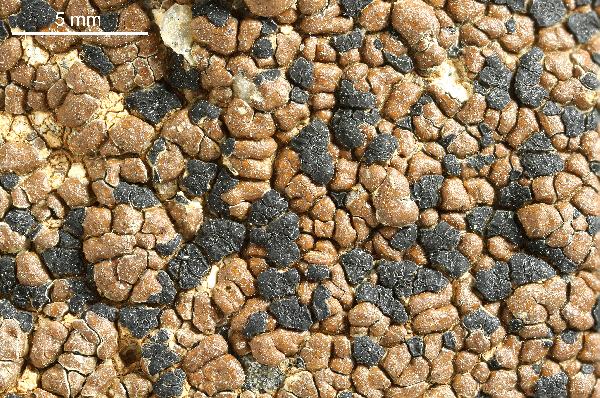

Felix Schumm - CC BY-SA 4.0
[10126], Südspanien, Prov. Granada: verbreitet auf glattem, schwach
geneigtem, licht- und windoffenem Urgesteinsschutt im Omphalodinion
rubinae, 3100 m, pH 6,5, Plattenschüsse am Nordwestaufschwung
des Mulhacén in der Sierra Nevada. Leg. G. Follmann, 07.1975, det. J.
Poelt, 09.1975. EX. G.FOLLMANN LICHENES SELECTI EXSICCATI NR.
171.
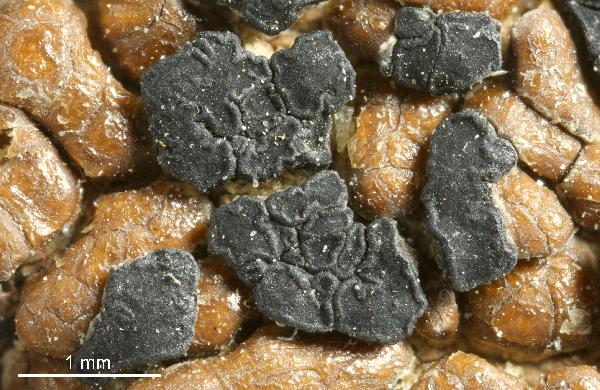

Felix Schumm - CC BY-SA 4.0
[10126], Südspanien, Prov. Granada: verbreitet auf glattem, schwach
geneigtem, licht- und windoffenem Urgesteinsschutt im Omphalodinion
rubinae, 3100 m, pH 6,5, Plattenschüsse am Nordwestaufschwung
des Mulhacén in der Sierra Nevada. Leg. G. Follmann, 07.1975, det. J.
Poelt, 09.1975. EX. G.FOLLMANN LICHENES SELECTI EXSICCATI NR.
171.
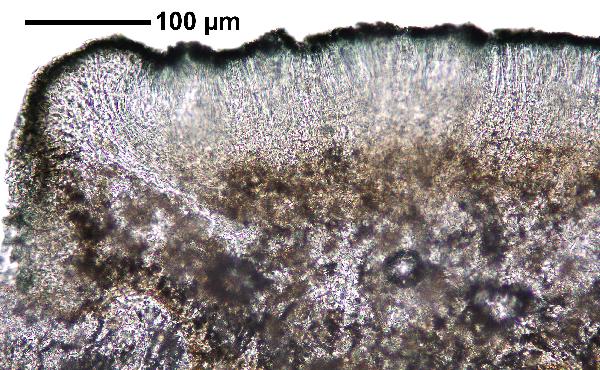

Felix Schumm - CC BY-SA 4.0
[10126], Südspanien, Prov. Granada: verbreitet auf glattem, schwach
geneigtem, licht- und windoffenem Urgesteinsschutt im Omphalodinion
rubinae, 3100 m, pH 6,5, Plattenschüsse am Nordwestaufschwung
des Mulhacén in der Sierra Nevada. Leg. G. Follmann, 07.1975, det. J.
Poelt, 09.1975. EX. G.FOLLMANN LICHENES SELECTI EXSICCATI NR.
171.
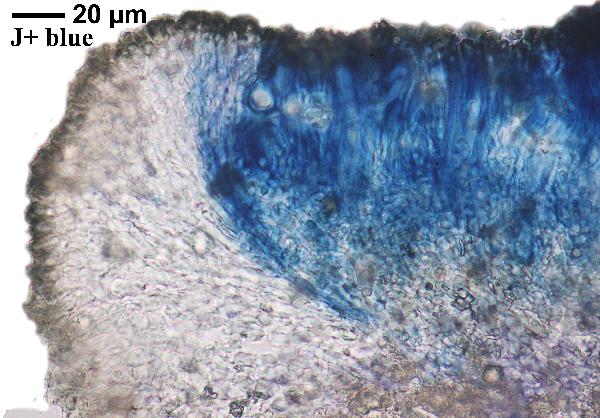

Felix Schumm - CC BY-SA 4.0
[10126], Südspanien, Prov. Granada: verbreitet auf glattem, schwach
geneigtem, licht- und windoffenem Urgesteinsschutt im Omphalodinion
rubinae, 3100 m, pH 6,5, Plattenschüsse am Nordwestaufschwung
des Mulhacén in der Sierra Nevada. Leg. G. Follmann, 07.1975, det. J.
Poelt, 09.1975. EX. G.FOLLMANN LICHENES SELECTI EXSICCATI NR.
171.


Felix Schumm - CC BY-SA 4.0
[10126], Südspanien, Prov. Granada: verbreitet auf glattem, schwach
geneigtem, licht- und windoffenem Urgesteinsschutt im Omphalodinion
rubinae, 3100 m, pH 6,5, Plattenschüsse am Nordwestaufschwung
des Mulhacén in der Sierra Nevada. Leg. G. Follmann, 07.1975, det. J.
Poelt, 09.1975. EX. G.FOLLMANN LICHENES SELECTI EXSICCATI NR.
171.
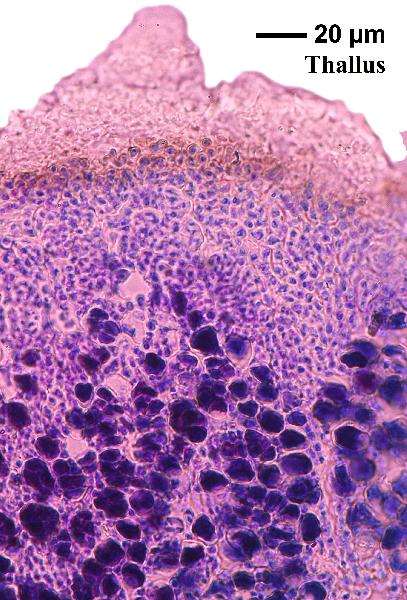

Felix Schumm - CC BY-SA 4.0
[10126], Südspanien, Prov. Granada: verbreitet auf glattem, schwach
geneigtem, licht- und windoffenem Urgesteinsschutt im Omphalodinion
rubinae, 3100 m, pH 6,5, Plattenschüsse am Nordwestaufschwung
des Mulhacén in der Sierra Nevada. Leg. G. Follmann, 07.1975, det. J.
Poelt, 09.1975. EX. G.FOLLMANN LICHENES SELECTI EXSICCATI NR.
171.
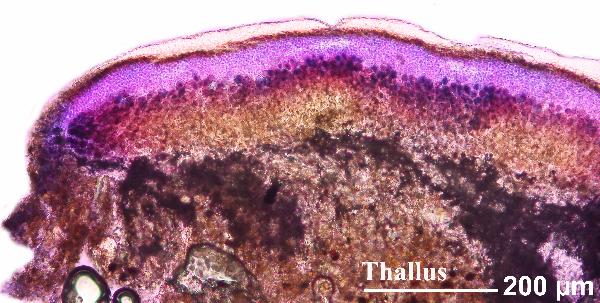

Felix Schumm - CC BY-SA 4.0
[10126], Südspanien, Prov. Granada: verbreitet auf glattem, schwach
geneigtem, licht- und windoffenem Urgesteinsschutt im Omphalodinion
rubinae, 3100 m, pH 6,5, Plattenschüsse am Nordwestaufschwung
des Mulhacén in der Sierra Nevada. Leg. G. Follmann, 07.1975, det. J.
Poelt, 09.1975. EX. G.FOLLMANN LICHENES SELECTI EXSICCATI NR.
171.
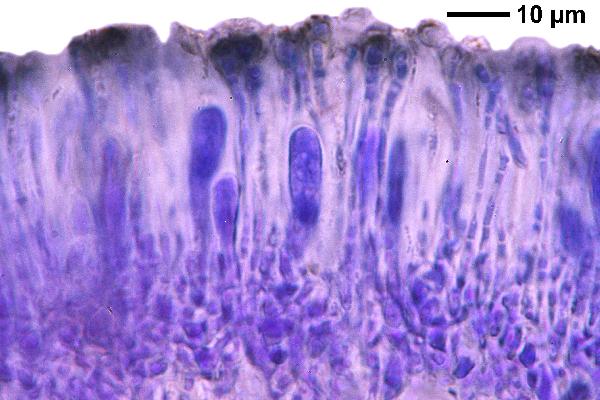

Felix Schumm - CC BY-SA 4.0
[10126], Südspanien, Prov. Granada: verbreitet auf glattem, schwach
geneigtem, licht- und windoffenem Urgesteinsschutt im Omphalodinion
rubinae, 3100 m, pH 6,5, Plattenschüsse am Nordwestaufschwung
des Mulhacén in der Sierra Nevada. Leg. G. Follmann, 07.1975, det. J.
Poelt, 09.1975. EX. G.FOLLMANN LICHENES SELECTI EXSICCATI NR.
171.


Felix Schumm - CC BY-SA 4.0
[10126], Südspanien, Prov. Granada: verbreitet auf glattem, schwach
geneigtem, licht- und windoffenem Urgesteinsschutt im Omphalodinion
rubinae, 3100 m, pH 6,5, Plattenschüsse am Nordwestaufschwung
des Mulhacén in der Sierra Nevada. Leg. G. Follmann, 07.1975, det. J.
Poelt, 09.1975. EX. G.FOLLMANN LICHENES SELECTI EXSICCATI NR.
171.


Felix Schumm - CC BY-SA 4.0
[10126], Südspanien, Prov. Granada: verbreitet auf glattem, schwach
geneigtem, licht- und windoffenem Urgesteinsschutt im Omphalodinion
rubinae, 3100 m, pH 6,5, Plattenschüsse am Nordwestaufschwung
des Mulhacén in der Sierra Nevada. Leg. G. Follmann, 07.1975, det. J.
Poelt, 09.1975. EX. G.FOLLMANN LICHENES SELECTI EXSICCATI NR.
171.
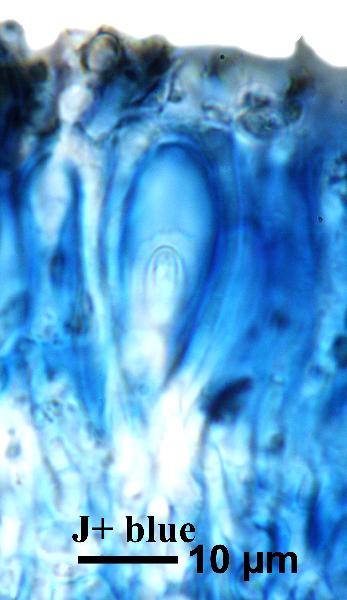

Felix Schumm - CC BY-SA 4.0
[10126], Südspanien, Prov. Granada: verbreitet auf glattem, schwach
geneigtem, licht- und windoffenem Urgesteinsschutt im Omphalodinion
rubinae, 3100 m, pH 6,5, Plattenschüsse am Nordwestaufschwung
des Mulhacén in der Sierra Nevada. Leg. G. Follmann, 07.1975, det. J.
Poelt, 09.1975. EX. G.FOLLMANN LICHENES SELECTI EXSICCATI NR.
171.
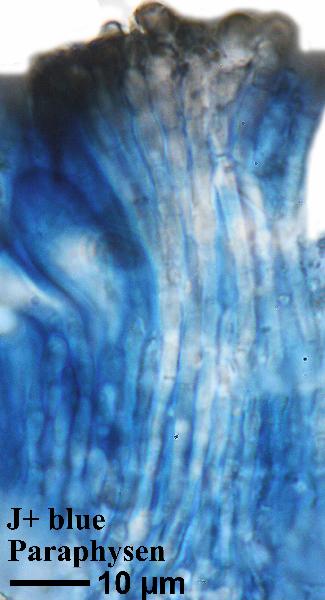

Felix Schumm - CC BY-SA 4.0
[10126], Südspanien, Prov. Granada: verbreitet auf glattem, schwach
geneigtem, licht- und windoffenem Urgesteinsschutt im Omphalodinion
rubinae, 3100 m, pH 6,5, Plattenschüsse am Nordwestaufschwung
des Mulhacén in der Sierra Nevada. Leg. G. Follmann, 07.1975, det. J.
Poelt, 09.1975. EX. G.FOLLMANN LICHENES SELECTI EXSICCATI NR.
171.
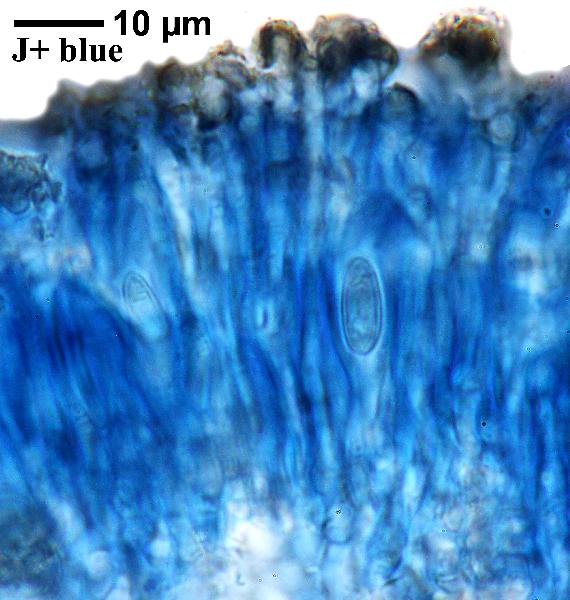

Felix Schumm - CC BY-SA 4.0
[10126], Südspanien, Prov. Granada: verbreitet auf glattem, schwach
geneigtem, licht- und windoffenem Urgesteinsschutt im Omphalodinion
rubinae, 3100 m, pH 6,5, Plattenschüsse am Nordwestaufschwung
des Mulhacén in der Sierra Nevada. Leg. G. Follmann, 07.1975, det. J.
Poelt, 09.1975. EX. G.FOLLMANN LICHENES SELECTI EXSICCATI NR.
171.
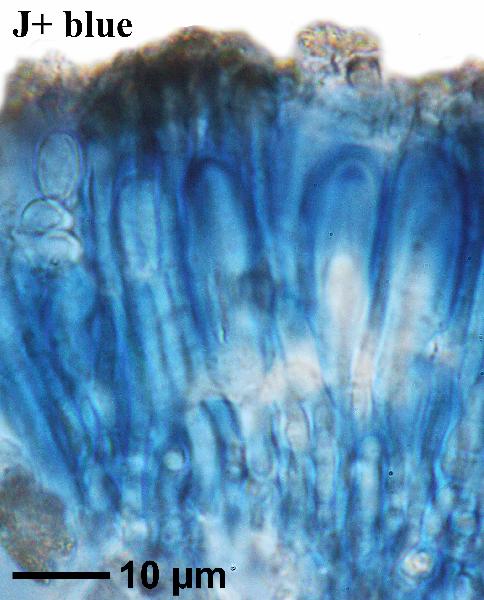

Felix Schumm - CC BY-SA 4.0
[10126], Südspanien, Prov. Granada: verbreitet auf glattem, schwach
geneigtem, licht- und windoffenem Urgesteinsschutt im Omphalodinion
rubinae, 3100 m, pH 6,5, Plattenschüsse am Nordwestaufschwung
des Mulhacén in der Sierra Nevada. Leg. G. Follmann, 07.1975, det. J.
Poelt, 09.1975. EX. G.FOLLMANN LICHENES SELECTI EXSICCATI NR.
171.
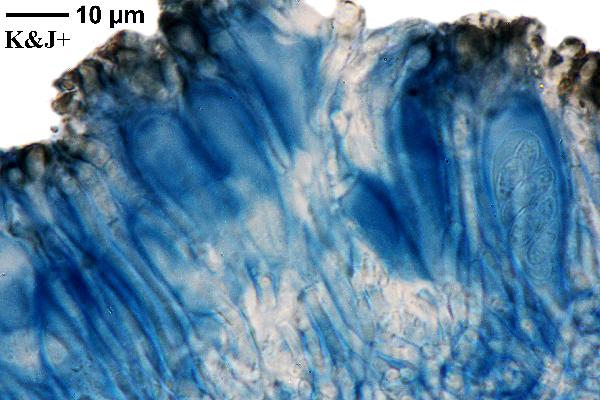

Felix Schumm - CC BY-SA 4.0
[10126], Südspanien, Prov. Granada: verbreitet auf glattem, schwach
geneigtem, licht- und windoffenem Urgesteinsschutt im Omphalodinion
rubinae, 3100 m, pH 6,5, Plattenschüsse am Nordwestaufschwung
des Mulhacén in der Sierra Nevada. Leg. G. Follmann, 07.1975, det. J.
Poelt, 09.1975. EX. G.FOLLMANN LICHENES SELECTI EXSICCATI NR.
171.
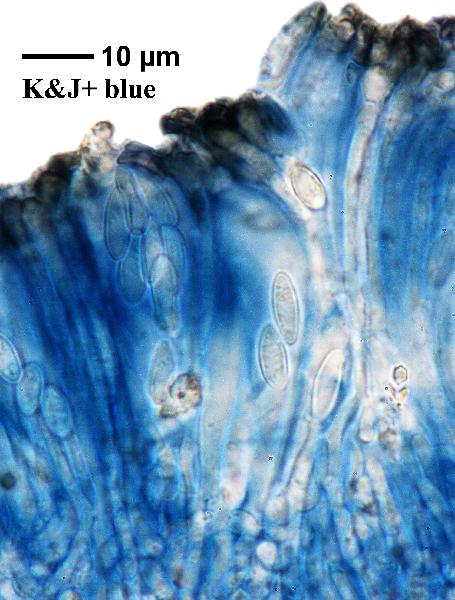

Felix Schumm - CC BY-SA 4.0
[10126], Südspanien, Prov. Granada: verbreitet auf glattem, schwach
geneigtem, licht- und windoffenem Urgesteinsschutt im Omphalodinion
rubinae, 3100 m, pH 6,5, Plattenschüsse am Nordwestaufschwung
des Mulhacén in der Sierra Nevada. Leg. G. Follmann, 07.1975, det. J.
Poelt, 09.1975. EX. G.FOLLMANN LICHENES SELECTI EXSICCATI NR.
171.
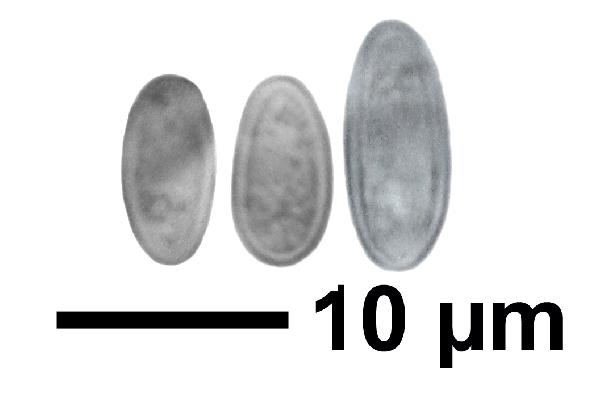

Felix Schumm - CC BY-SA 4.0
[10126], Südspanien, Prov. Granada: verbreitet auf glattem, schwach
geneigtem, licht- und windoffenem Urgesteinsschutt im Omphalodinion
rubinae, 3100 m, pH 6,5, Plattenschüsse am Nordwestaufschwung
des Mulhacén in der Sierra Nevada. Leg. G. Follmann, 07.1975, det. J.
Poelt, 09.1975. EX. G.FOLLMANN LICHENES SELECTI EXSICCATI NR.
171.


Felix Schumm - CC BY-SA 4.0
[10126], Südspanien, Prov. Granada: verbreitet auf glattem, schwach
geneigtem, licht- und windoffenem Urgesteinsschutt im Omphalodinion
rubinae, 3100 m, pH 6,5, Plattenschüsse am Nordwestaufschwung
des Mulhacén in der Sierra Nevada. Leg. G. Follmann, 07.1975, det. J.
Poelt, 09.1975. EX. G.FOLLMANN LICHENES SELECTI EXSICCATI NR.
171.


Felix Schumm - CC BY-SA 4.0
[10126], Südspanien, Prov. Granada: verbreitet auf glattem, schwach
geneigtem, licht- und windoffenem Urgesteinsschutt im Omphalodinion
rubinae, 3100 m, pH 6,5, Plattenschüsse am Nordwestaufschwung
des Mulhacén in der Sierra Nevada. Leg. G. Follmann, 07.1975, det. J.
Poelt, 09.1975. EX. G.FOLLMANN LICHENES SELECTI EXSICCATI NR.
171.
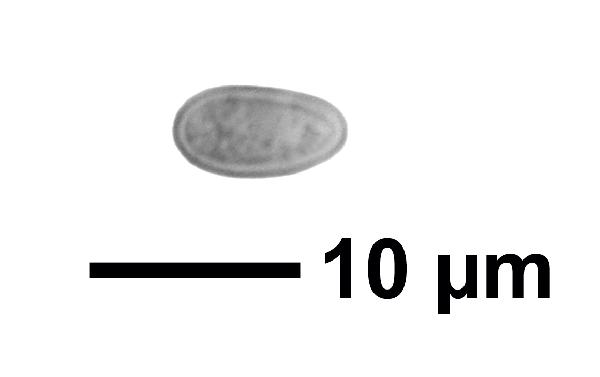

Felix Schumm - CC BY-SA 4.0
[10126], Südspanien, Prov. Granada: verbreitet auf glattem, schwach
geneigtem, licht- und windoffenem Urgesteinsschutt im Omphalodinion
rubinae, 3100 m, pH 6,5, Plattenschüsse am Nordwestaufschwung
des Mulhacén in der Sierra Nevada. Leg. G. Follmann, 07.1975, det. J.
Poelt, 09.1975. EX. G.FOLLMANN LICHENES SELECTI EXSICCATI NR.
171.
Growth form: Crustose
Substrata: rocks
Photobiont: green algae other than Trentepohlia
Reproductive strategy: mainly sexual
paras Bellemerea spp. and Lecidea silacea when young
Species of metal-rich rocks
Commonnes-rarity: (info)
Alpine belt: extremely common
Subalpine belt: rather common
Oromediterranean belt: very rare
Montane belt: absent
Submediterranean belt: absent
Padanian area: absent
Humid submediterranean belt: absent
Humid mediterranean belt: absent
Dry mediterranean belt: absent

Predictive model
| Herbarium samples |


P.L. Nimis; Owner: Department of Life Sciences, University of Trieste
Herbarium: TSB (35206)
2002/07/09
marginal areolae and prothallus


P.L. Nimis; Owner: Department of Life Sciences, University of Trieste
Herbarium: TSB (11714)
2001/11/26

Courtesy Danièle et Olivier Gonnet - Source: https://www.afl-lichenologie.fr/Photos_AFL/Photos_AFL_L/Texte_L_2/Lecidea_atrobrunnea.htm
France, session AFL 2012 - Pyrénées-Orientales

Courtesy Danièle et Olivier Gonnet - Source: https://www.afl-lichenologie.fr/Photos_AFL/Photos_AFL_L/Texte_L_2/Lecidea_atrobrunnea.htm
France, session AFL 2012 - Pyrénées-Orientales


Felix Schumm - CC BY-SA 4.0
[10126], Südspanien, Prov. Granada: verbreitet auf glattem, schwach geneigtem, licht- und windoffenem Urgesteinsschutt im Omphalodinion rubinae, 3100 m, pH 6,5, Plattenschüsse am Nordwestaufschwung des Mulhacén in der Sierra Nevada. Leg. G. Follmann, 07.1975, det. J. Poelt, 09.1975. EX. G.FOLLMANN LICHENES SELECTI EXSICCATI NR. 171.


Felix Schumm - CC BY-SA 4.0
[10126], Südspanien, Prov. Granada: verbreitet auf glattem, schwach geneigtem, licht- und windoffenem Urgesteinsschutt im Omphalodinion rubinae, 3100 m, pH 6,5, Plattenschüsse am Nordwestaufschwung des Mulhacén in der Sierra Nevada. Leg. G. Follmann, 07.1975, det. J. Poelt, 09.1975. EX. G.FOLLMANN LICHENES SELECTI EXSICCATI NR. 171.


Felix Schumm - CC BY-SA 4.0
[10126], Südspanien, Prov. Granada: verbreitet auf glattem, schwach geneigtem, licht- und windoffenem Urgesteinsschutt im Omphalodinion rubinae, 3100 m, pH 6,5, Plattenschüsse am Nordwestaufschwung des Mulhacén in der Sierra Nevada. Leg. G. Follmann, 07.1975, det. J. Poelt, 09.1975. EX. G.FOLLMANN LICHENES SELECTI EXSICCATI NR. 171.


Felix Schumm - CC BY-SA 4.0
[10126], Südspanien, Prov. Granada: verbreitet auf glattem, schwach geneigtem, licht- und windoffenem Urgesteinsschutt im Omphalodinion rubinae, 3100 m, pH 6,5, Plattenschüsse am Nordwestaufschwung des Mulhacén in der Sierra Nevada. Leg. G. Follmann, 07.1975, det. J. Poelt, 09.1975. EX. G.FOLLMANN LICHENES SELECTI EXSICCATI NR. 171.


Felix Schumm - CC BY-SA 4.0
[10126], Südspanien, Prov. Granada: verbreitet auf glattem, schwach geneigtem, licht- und windoffenem Urgesteinsschutt im Omphalodinion rubinae, 3100 m, pH 6,5, Plattenschüsse am Nordwestaufschwung des Mulhacén in der Sierra Nevada. Leg. G. Follmann, 07.1975, det. J. Poelt, 09.1975. EX. G.FOLLMANN LICHENES SELECTI EXSICCATI NR. 171.


Felix Schumm - CC BY-SA 4.0
[10126], Südspanien, Prov. Granada: verbreitet auf glattem, schwach geneigtem, licht- und windoffenem Urgesteinsschutt im Omphalodinion rubinae, 3100 m, pH 6,5, Plattenschüsse am Nordwestaufschwung des Mulhacén in der Sierra Nevada. Leg. G. Follmann, 07.1975, det. J. Poelt, 09.1975. EX. G.FOLLMANN LICHENES SELECTI EXSICCATI NR. 171.


Felix Schumm - CC BY-SA 4.0
[10126], Südspanien, Prov. Granada: verbreitet auf glattem, schwach geneigtem, licht- und windoffenem Urgesteinsschutt im Omphalodinion rubinae, 3100 m, pH 6,5, Plattenschüsse am Nordwestaufschwung des Mulhacén in der Sierra Nevada. Leg. G. Follmann, 07.1975, det. J. Poelt, 09.1975. EX. G.FOLLMANN LICHENES SELECTI EXSICCATI NR. 171.


Felix Schumm - CC BY-SA 4.0
[10126], Südspanien, Prov. Granada: verbreitet auf glattem, schwach geneigtem, licht- und windoffenem Urgesteinsschutt im Omphalodinion rubinae, 3100 m, pH 6,5, Plattenschüsse am Nordwestaufschwung des Mulhacén in der Sierra Nevada. Leg. G. Follmann, 07.1975, det. J. Poelt, 09.1975. EX. G.FOLLMANN LICHENES SELECTI EXSICCATI NR. 171.


Felix Schumm - CC BY-SA 4.0
[10126], Südspanien, Prov. Granada: verbreitet auf glattem, schwach geneigtem, licht- und windoffenem Urgesteinsschutt im Omphalodinion rubinae, 3100 m, pH 6,5, Plattenschüsse am Nordwestaufschwung des Mulhacén in der Sierra Nevada. Leg. G. Follmann, 07.1975, det. J. Poelt, 09.1975. EX. G.FOLLMANN LICHENES SELECTI EXSICCATI NR. 171.


Felix Schumm - CC BY-SA 4.0
[10126], Südspanien, Prov. Granada: verbreitet auf glattem, schwach geneigtem, licht- und windoffenem Urgesteinsschutt im Omphalodinion rubinae, 3100 m, pH 6,5, Plattenschüsse am Nordwestaufschwung des Mulhacén in der Sierra Nevada. Leg. G. Follmann, 07.1975, det. J. Poelt, 09.1975. EX. G.FOLLMANN LICHENES SELECTI EXSICCATI NR. 171.


Felix Schumm - CC BY-SA 4.0
[10126], Südspanien, Prov. Granada: verbreitet auf glattem, schwach geneigtem, licht- und windoffenem Urgesteinsschutt im Omphalodinion rubinae, 3100 m, pH 6,5, Plattenschüsse am Nordwestaufschwung des Mulhacén in der Sierra Nevada. Leg. G. Follmann, 07.1975, det. J. Poelt, 09.1975. EX. G.FOLLMANN LICHENES SELECTI EXSICCATI NR. 171.


Felix Schumm - CC BY-SA 4.0
[10126], Südspanien, Prov. Granada: verbreitet auf glattem, schwach geneigtem, licht- und windoffenem Urgesteinsschutt im Omphalodinion rubinae, 3100 m, pH 6,5, Plattenschüsse am Nordwestaufschwung des Mulhacén in der Sierra Nevada. Leg. G. Follmann, 07.1975, det. J. Poelt, 09.1975. EX. G.FOLLMANN LICHENES SELECTI EXSICCATI NR. 171.


Felix Schumm - CC BY-SA 4.0
[10126], Südspanien, Prov. Granada: verbreitet auf glattem, schwach geneigtem, licht- und windoffenem Urgesteinsschutt im Omphalodinion rubinae, 3100 m, pH 6,5, Plattenschüsse am Nordwestaufschwung des Mulhacén in der Sierra Nevada. Leg. G. Follmann, 07.1975, det. J. Poelt, 09.1975. EX. G.FOLLMANN LICHENES SELECTI EXSICCATI NR. 171.


Felix Schumm - CC BY-SA 4.0
[10126], Südspanien, Prov. Granada: verbreitet auf glattem, schwach geneigtem, licht- und windoffenem Urgesteinsschutt im Omphalodinion rubinae, 3100 m, pH 6,5, Plattenschüsse am Nordwestaufschwung des Mulhacén in der Sierra Nevada. Leg. G. Follmann, 07.1975, det. J. Poelt, 09.1975. EX. G.FOLLMANN LICHENES SELECTI EXSICCATI NR. 171.


Felix Schumm - CC BY-SA 4.0
[10126], Südspanien, Prov. Granada: verbreitet auf glattem, schwach geneigtem, licht- und windoffenem Urgesteinsschutt im Omphalodinion rubinae, 3100 m, pH 6,5, Plattenschüsse am Nordwestaufschwung des Mulhacén in der Sierra Nevada. Leg. G. Follmann, 07.1975, det. J. Poelt, 09.1975. EX. G.FOLLMANN LICHENES SELECTI EXSICCATI NR. 171.


Felix Schumm - CC BY-SA 4.0
[10126], Südspanien, Prov. Granada: verbreitet auf glattem, schwach geneigtem, licht- und windoffenem Urgesteinsschutt im Omphalodinion rubinae, 3100 m, pH 6,5, Plattenschüsse am Nordwestaufschwung des Mulhacén in der Sierra Nevada. Leg. G. Follmann, 07.1975, det. J. Poelt, 09.1975. EX. G.FOLLMANN LICHENES SELECTI EXSICCATI NR. 171.


Felix Schumm - CC BY-SA 4.0
[10126], Südspanien, Prov. Granada: verbreitet auf glattem, schwach geneigtem, licht- und windoffenem Urgesteinsschutt im Omphalodinion rubinae, 3100 m, pH 6,5, Plattenschüsse am Nordwestaufschwung des Mulhacén in der Sierra Nevada. Leg. G. Follmann, 07.1975, det. J. Poelt, 09.1975. EX. G.FOLLMANN LICHENES SELECTI EXSICCATI NR. 171.


Felix Schumm - CC BY-SA 4.0
[10126], Südspanien, Prov. Granada: verbreitet auf glattem, schwach geneigtem, licht- und windoffenem Urgesteinsschutt im Omphalodinion rubinae, 3100 m, pH 6,5, Plattenschüsse am Nordwestaufschwung des Mulhacén in der Sierra Nevada. Leg. G. Follmann, 07.1975, det. J. Poelt, 09.1975. EX. G.FOLLMANN LICHENES SELECTI EXSICCATI NR. 171.


Felix Schumm - CC BY-SA 4.0
[10126], Südspanien, Prov. Granada: verbreitet auf glattem, schwach geneigtem, licht- und windoffenem Urgesteinsschutt im Omphalodinion rubinae, 3100 m, pH 6,5, Plattenschüsse am Nordwestaufschwung des Mulhacén in der Sierra Nevada. Leg. G. Follmann, 07.1975, det. J. Poelt, 09.1975. EX. G.FOLLMANN LICHENES SELECTI EXSICCATI NR. 171.


 INDEX FUNGORUM
INDEX FUNGORUM
 GBIF
GBIF
 DOLICHENS
DOLICHENS
